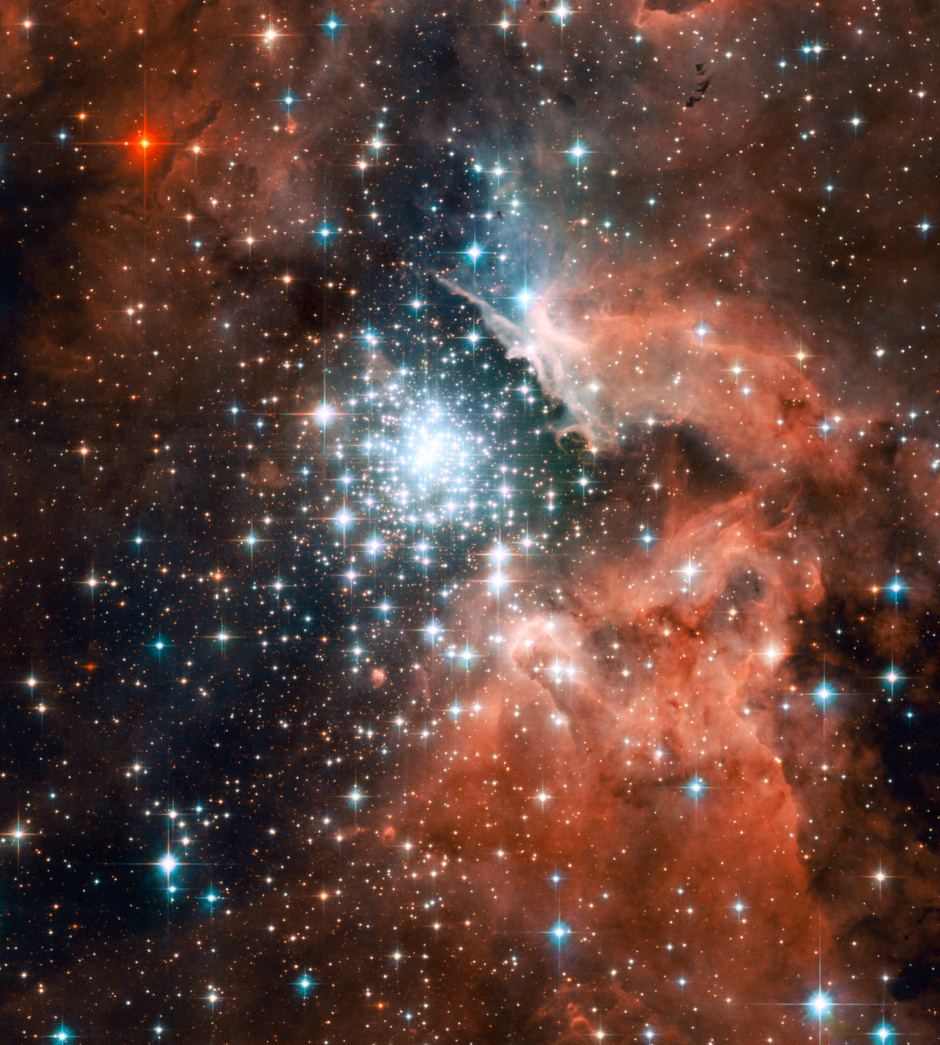별자리 : 용골자리(Carina)
거리 : 약 2만 광년(6100 Parsecs)
수 천개의 젊은 별이 거대성운 NGC3603에서 빛을 내뿜고 있다.
이곳은 우리 은하에서 가장 무거운 어린 별들이 모여 있는 별의 "보석상자"라 할 수 있다.
NGC3603은 우리 은하 나선팔에 속한 용골자리에 있는 별 제조 공장으로서 약 2만 광년 떨어져 있다.
허블 우주 망원경이 최근 촬영한 이 사진에는 가스와 먼지로 둘러싸인 채 광대하게 펼쳐진 별무리가 담겨 있다.
이 사진은 별의 생명주기를 밝혀주기도 한다.
뜨거운 푸른 별에서 뿜어져나오는 강력한 자외선 복사와 폭풍은 성단 주위의 먼지와 가스를 쓸어내며 거대한 거품 모양을 만들어 내는 한편, 성운 사이를 헤집고 들어가 빽빽한 가스기둥을 만들기도 한다.
이렇게 생성된 가스기둥은 그 길이가 수 광년에 이르며 사진에서는 성단의 중심부로부터 뻗어나온 모습을 볼 수 있다.
이 가스기둥은 마치 별의 인큐베이터와 같은 작용을 한다.
사진 상단 오른쪽에 부분적으로 보이는, 이 어두운 먼지구름을 "Bok" globule이라 부른다.
이 구름들은 고밀도의 먼지와 가스로 이루어져 있으며 그 질량은 태양의 10배에서 50배에 이른다.
곤충의 고치를 닮은 Bok Globule은 중력붕괴를 지속하며 새로운 별들을 만들어내고 있는 중이다.
이 성운은 1834년 존 허설 경에 의해 처음 발견되었다.
사진의 가로 길이는 약 17광년의 길이이며 2005년 12월 29일 ACS(Advanced Camera for Surveys) 카메라에 의해 촬영되었다.
* '허블사이트'의 게시물들은 허블사이트 http://hubblesite.org 의 뉴스센터 자료들을 번역한 것입니다.
본 내용은 2007년 10월 2일 발표된 뉴스입니다.
'3. 천문뉴스 > 허블사이트' 카테고리의 다른 글
| 나선형 은하 M81 (0) | 2007.10.13 |
|---|---|
| SDSS J0737+3216, SLACS J0737+3216 (0) | 2007.10.08 |
| 에리스(Eris)와 위성 디스노미아(Dysnomia) (0) | 2007.09.22 |
| 소행성 세레스와 베스타 (0) | 2007.09.21 |
| 허블이 촬영한 목성의 대기변화 (0) | 2007.09.20 |
